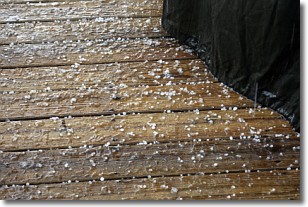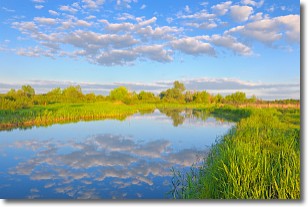Weather Alert in Louisiana
Flood Warning issued April 23 at 9:10PM CDT until May 11 at 1:00AM CDT by NWS New Orleans LA
AREAS AFFECTED: East Baton Rouge, LA; West Baton Rouge, LA
DESCRIPTION: ...The Flood Warning is extended for the following rivers in Louisiana... Mississippi River At Reserve affecting St. John The Baptist, St. James and St. Charles Parishes. ...The Flood Warning continues for the following rivers in Louisiana... Mississippi River At Donaldsonville affecting Ascension Parish. Mississippi River At Baton Rouge affecting East Baton Rouge and West Baton Rouge Parishes. Mississippi River At Red River Landing affecting West Feliciana, Pointe Coupee and East Baton Rouge Parishes. For the Lower Mississippi River...including Red River Landing, Baton Rouge, Donaldsonville, Reserve, New Orleans...Major flooding is forecast. * WHAT...Moderate flooding is occurring and major flooding is forecast. * WHERE...Mississippi River at Baton Rouge. * WHEN...Until Sunday, May 11. * IMPACTS...At 40.0 feet, The grounds of the older part of Louisiana State University's campus become soggy. This includes the area around the Veterinary Medicine building, the Veterinary Medicine Annex, the stadium and ball fields. The city of Baton Rouge and the main LSU campus are protected by levees at this level. * ADDITIONAL DETAILS... - At 8:00 PM CDT Wednesday the stage was 39.9 feet. - Bankfull stage is 29.0 feet. - Forecast...The river is expected to rise to a crest of 41.5 feet Thursday, May 01. It will then fall below flood stage Saturday, May 10. - Flood stage is 35.0 feet. - http://www.weather.gov/safety/flood
INSTRUCTION: Caution is urged when walking near riverbanks. Motorists should not attempt to drive around barricades or drive cars through flooded areas. Additional information is available at www.weather.gov/lix. Click on the Rivers and Lakes menu for forecasts and observations. The next statement will be issued Thursday afternoon at 115 PM CDT.
Want more detail? Get the Complete 7 Day and Night Detailed Forecast!
Current U.S. National Radar--Current
The Current National Weather Radar is shown below with a UTC Time (subtract 5 hours from UTC to get Eastern Time).

National Weather Forecast--Current
The Current National Weather Forecast and National Weather Map are shown below.

National Weather Forecast for Tomorrow
Tomorrow National Weather Forecast and Tomorrow National Weather Map are show below.

North America Water Vapor (Moisture)
This map shows recent moisture content over North America. Bright and colored areas show high moisture (ie, clouds); brown indicates very little moisture present; black indicates no moisture.

Weather Topic: What is Sleet?
Home - Education - Precipitation - Sleet
 Next Topic: Snow
Next Topic: Snow
Sleet is a form of precipitation in which small ice pellets are the primary
components. These ice pellets are smaller and more translucent than hailstones,
and harder than graupel. Sleet is caused by specific atmospheric conditions and
therefore typically doesn't last for extended periods of time.
The condition which leads to sleet formation requires a warmer body of air to be
wedged in between two sub-freezing bodies of air. When snow falls through a warmer
layer of air it melts, and as it falls through the next sub-freezing body of air
it freezes again, forming ice pellets known as sleet. In some cases, water
droplets don't have time to freeze before reaching the surface and the result is
freezing rain.
Next Topic: Snow
Weather Topic: What are Stratocumulus Clouds?
Home - Education - Cloud Types - Stratocumulus Clouds
 Next Topic: Stratus Clouds
Next Topic: Stratus Clouds
Stratocumulus clouds are similar to altocumulus clouds in their
fluffy appearance, but have a slightly darker shade due to their additional mass.
A good way to distinguish the two cloud types is to hold your hand out and measure
the size of an individual cloud; if it is the size of your thumb it is generally
an altocumulus cloud, if it is the size of your hand it is generally a
stratocumulus cloud.
It is uncommon for stratocumulus clouds to produce precipitation, but if they do
it is usually a light rain or snow.
Next Topic: Stratus Clouds
Current conditions powered by WeatherAPI.com




